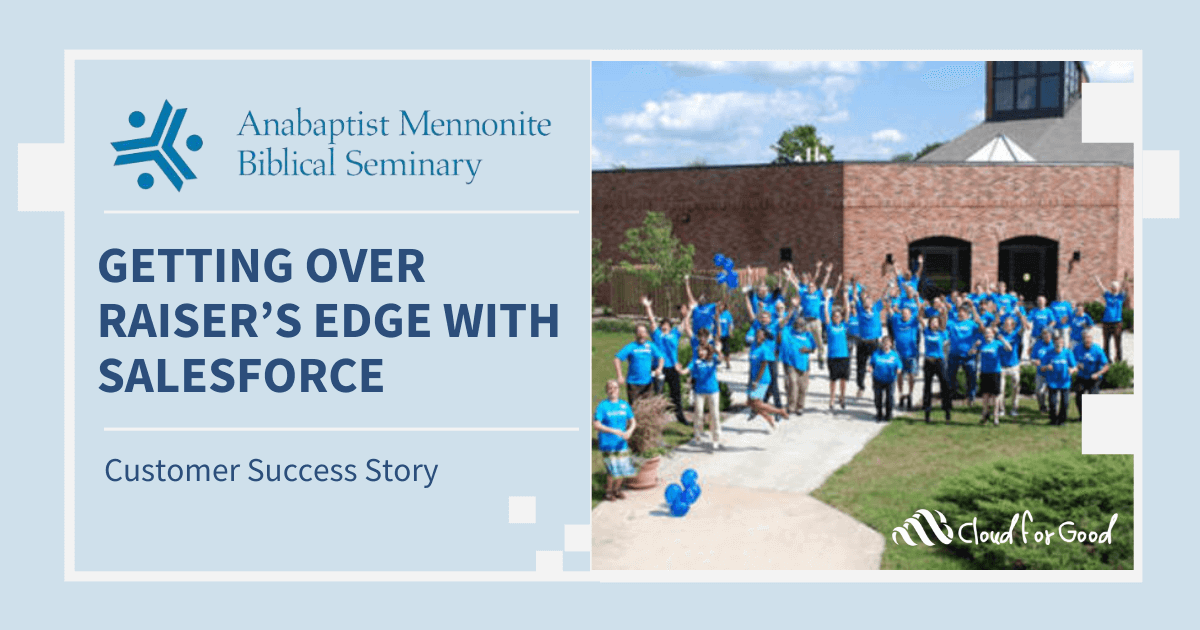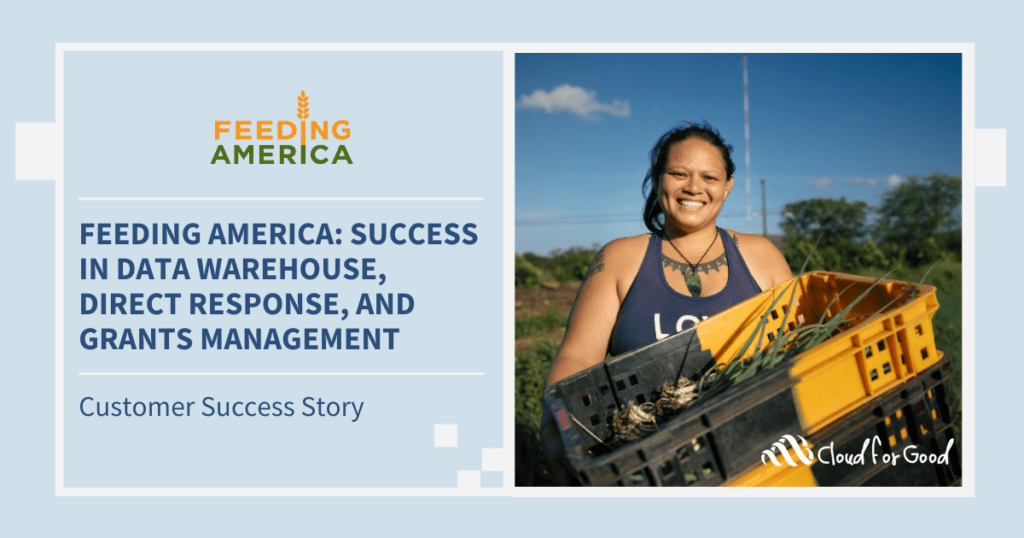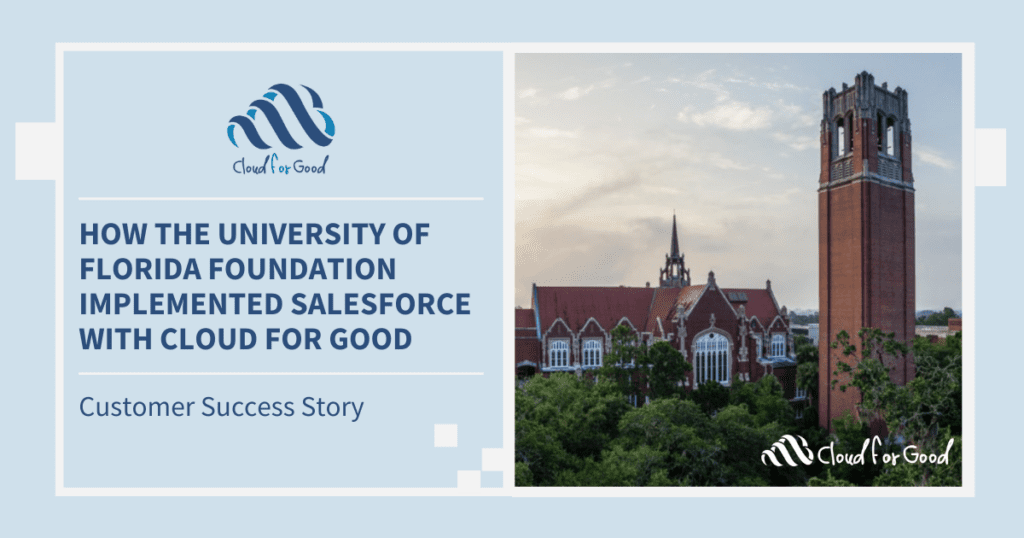Anabaptist Mennonite Biblical Seminary (AMBS) is a bi-national, degree-granting seminary of Mennonite Church USA and Mennonite Church Canada. Formed in 1958, AMBS offers an array of degrees and certificates under the Master of Divinity and Master of Arts to their theological students. The seminary operates out of south-central Elkhart, Indiana, and provides a dynamic environment for seminarians to build personal connections with fellow students, instructors, and followers around the globe. As educators within their space, AMBS seeks to resolve conflict, welcome displaced immigrants, and nurture relationships based on the tenants of integrity and community.
Prior to the beginning of their partnership with Cloud for Good in early 2019, AMBS utilized Blackbaud’s Raiser’s Edge to fulfill their CRM needs. Unfortunately, the utilization of this tool resulted in several pain points for internal users across the seminary’s departments. Difficulties inherent to the system were exacerbated by forced migration from Blackbaud, but these issues would prove to be silver linings that gave AMBS the opportunity to explore a new technology platform better equipped to align with their growing needs. In their exploration, AMBS quickly recognized the reputation Salesforce had built within the education sector, as well as the significant investments they had committed to the long-term health of the space. Soon thereafter, AMBS engaged with Cloud for Good to begin the transformative process of migrating their fundraising, marketing, and campaigns from Raiser’s Edge to Salesforce.

Getting Over the Edge
Migrating from one technology solution to another is a critically important undertaking. This was especially true in the case of AMBS where time constrictions for a forced upgrade existed. Working with AMBS, Cloud for Good took a strategic approach to their data migration, first understanding the business processes that AMBS’s advancement team had established, and then gradually mapping data according to scheduled build cycles. Taking this considered approach allows for the Cloud for Good team to gain deeper insight into the seminary’s data structure and ensured that every checkpoint of the migration was checked and balanced according to scheduled cycles.
This data migration methodology paved the way for high user adoption rates on the AMBS side, as well as a deeper understanding of the system AMBS was coming from, and where they were needing to go from Cloud for Good’s perspective. Working closely with the AMBS team, Cloud for Good established intentional cycles of data mapping, building scripts to move data over from one system to another, and then performing demos for AMBS every two weeks following significant progress within the data migration process. Following the data demo, AMBS was provided enough time to compare the data that was now housed in Salesforce to the same data housed in the previous Raiser’s Edge system. Doing so made certain that all data migrated as expected according to validation from those that knew the data best.
A Timely Move to Cloud-Based Technologies
Brent Graber, Director of Information Technology at AMBS, reflected on the unforeseen benefits their new cloud-based technology has granted AMBS, considering the mass rise in remote work and virtual learning, Graber revealed that “having migrated to something that’s cloud-based has been really beneficial for us, kind of unexpectedly.”
Working remotely, prior to implementing Salesforce, was considered tedious at best and impractical at worst due to Raiser’s Edge requiring the use of a VPN. “It seems like such a small thing these days, the fact that Salesforce is cloud-based, but it’s really pretty miraculous. No more dealing with a bulky VPN or a slow database on campus that taxes our local network,” said Graber, “we decided early on that going cloud-based was a key priority for us during our migration. Being able to access the system from anywhere is a massive change. I can’t emphasize that enough.” Graber described AMBS’s migration to Salesforce as “very smooth,” in reference to the way the seminary was able to replace an inflexible Raiser’s Edge system that limited customization with a Salesforce system equipped to better track and manage their donors, families, churches, and constituents, all within a configurable environment.

Evolving Business Processes Through Automation
The AMBS development office, lifelong learning, and marketing teams all reported difficulties related to their previous technology. Simple reporting tasks were made cumbersome by overloaded servers and an aging user interface, and an overreliance on manual processes brought down departmental efficiency. Previously, the AMBS mailing system lacked integration with their CRM and data reporting. This led to the realization that development and lifelong learning teams were simply not getting out of the software what they thought they needed to accommodate the seminary’s growth. Digital marketing efforts were undermined by the lack of integration, even resulting in those that unsubscribed from the seminary’s email communications continuing to receive communication, causing confusion, higher spam scores, and an urgent need for a reliable alternative.
Now with the ability to augment business processes with Salesforce, AMBS marketing is able to remain flexible and receive real-time synchronization between Mailchimp and Salesforce, the lifelong learning team is able to more reliably get information into and out of the CRM, and the development team has a clearer picture of giving patterns, especially among alumni.
Paving a Better Path Forward
In discussing the biggest differences in operations between the old Raiser’s Edge and the new Salesforce system, Graber mentioned specifically the ease of creating and sharing reports between internal staff: “We’ve adapted to the Salesforce environment quickly with the help of a few power users. Our data services manager has been adding fields and rules and processes and automating things that we just couldn’t do before. Salesforce also featured a much sleeker and more intuitive interface for our users. Our Raiser’s Edge interface was clearly aging, with lots of clicking back and forth between tabs to find various information. Our people needed an easier system to work with.”
The benefits of Salesforce’s partner and application ecosystem are highlighted by AMBS’s use of the third-party application Apsona. Used to assist in data imports and batch gift entry, Graber called the app “life-changing in the way that we now know our importing is accurate and reliable, instead of just crossing our fingers and hoping for the best.” Donor profile pages can now be made within Apsona, helping new AMBS development officers to better understand both the seminary’s operations and the constituents they serve.
Considering the success of the Cloud for Good-implemented migration to Salesforce, and looking back on the previous system’s inefficiencies, Graber stated that “it’s hard for me to imagine doing what we’re able to do now, even two years ago. I just don’t think it would have been feasible.” While many institutions are struggling with a sudden shift to remote technologies, AMBS has been able to maintain their commitment to their staff and students, streamlining process and operations across the board, all while making staff’s collective work lives much easier. Moving forward, AMBS plans to continue looking for intelligent ways to connect their academic and finance relationships in order to increase Salesforce synergy across departments and promote interaction between visibility and funding. “Our folks have a collaborative spirit. We’re looking forward to what’s next,” said Graber in closing.

To learn more about Anabaptist Mennonite Biblical Seminary, make sure to visit their website or follow them on Facebook.





